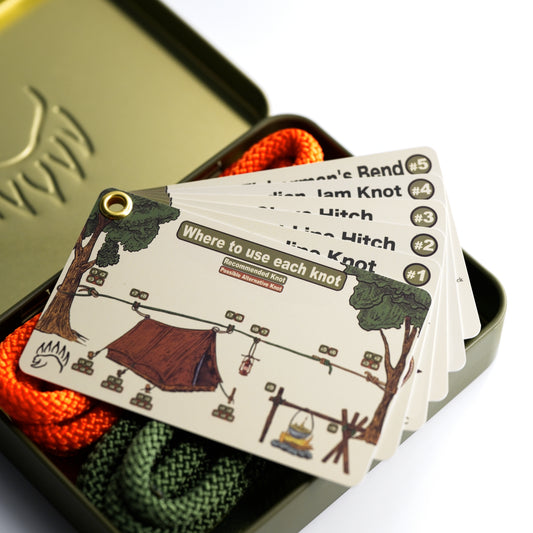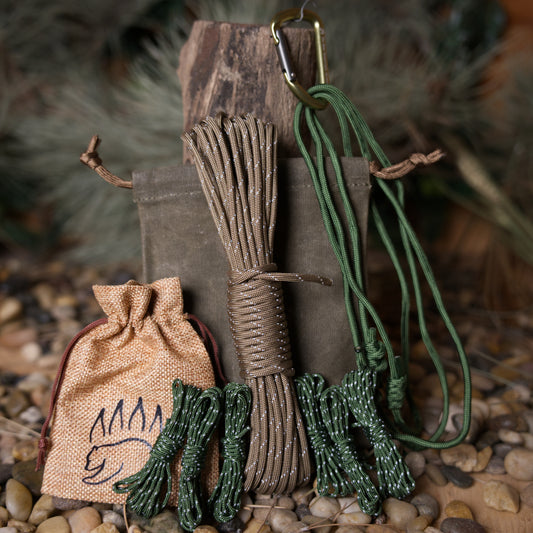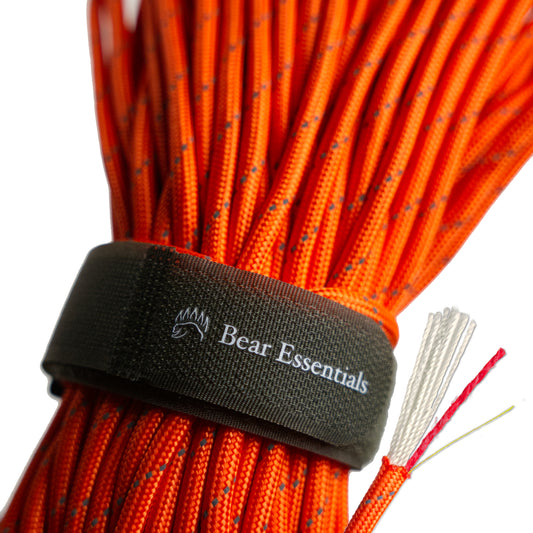How to Tie the Double Constrictor Knot (Symmetrical)
Usage
The Double Constrictor Knot (Symmetrical) is commonly used to tightly bind objects, such as ropes or gear, in bushcraft, camping, and utility tasks. Compared to the standard Constrictor Knot, this symmetrical variation provides an even tighter grip with a balanced appearance, making it ideal for securing loads. Its robust binding strength suits demanding applications, but it can be hard to untie after heavy tension. This knot is a favorite for reliable fastening.
Why Learn the Double Constrictor Knot (Symmetrical)?
Its symmetrical design ensures an ultra-tight hold. This knot is a top choice for outdoor enthusiasts and professionals needing secure binding. Extreme grip: Double wraps create a vice-like hold on objects. Symmetrical look: Balanced structure enhances aesthetics and stability. Versatile use: Suits bushcraft, camping, marine, and utility tasks. Durable binding: Resists slipping under heavy or sustained loads. Easy to tie: Builds on the simple Constrictor Knot technique.
Common Uses
-
Hoisting:
- Secures loads for lifting equipment or tools.
- Binds ropes for stable hoisting systems.
-
Scouts:
- Ties lashings for pioneering structures.
- Secures gear for camp setups.
-
Arborist:
- Binds ropes for rigging or climbing support.
- Secures branches during cutting operations.
-
Firefighting:
- Ties utility ropes for equipment or rescue tasks.
- Binds hoses or gear for secure transport.
-
Bushcraft:
- Fastens tarps or shelters tightly.
- Secures bundles for food storage or gear.
-
Camping:
- Ties down tarps for wind-resistant shelters.
- Binds gear for compact packing.
-
Boating/Marine:
- Secures lines to poles or cleats.
- Binds ropes for mooring or rigging.
-
Utility:
- Ties bags or bundles for household use.
- Secures cords in workshops or garages.
ABOK Number
(Ashley Book of Knots)
Other Names
Category
|
Notable Features
- Extreme Grip: Double wraps create a tight, vice-like hold.
- Symmetrical Look: Balanced and aesthetically pleasing structure.
- Durable Binding: Resists slipping under heavy or sustained loads.
- Versatile Use: Suited for bushcraft, camping, and utility tasks.
Variations
(No variations mentioned; section left blank.)
Similar Knots
Constrictor Knot vs. Double Constrictor Knot (Symmetrical)
- Pros: Simpler and faster to tie for basic binding.
- Cons: Less tight and lacks the symmetrical aesthetic.
Slipped Constrictor Knot vs. Double Constrictor Knot (Symmetrical)
- Pros: Easier to untie with a quick-release slip.
- Cons: Less secure under sustained tension compared to the symmetrical version.
Butcher’s Knot vs. Double Constrictor Knot (Symmetrical)
- Pros: Quick to tie for light binding tasks like parcels.
- Cons: Less tight and prone to slipping under heavy loads.
Square Knot vs. Double Constrictor Knot (Symmetrical)
- Pros: Simple and widely known for basic binding.
- Cons: Much weaker and slips easily compared to the Constrictor’s grip.
History
The Double Constrictor Knot (Symmetrical), a variation of the Constrictor Knot, likely originated in maritime contexts where secure binding was essential for cargo and rigging. Referenced in The Ashley Book of Knots (#1249) as part of the Constrictor family, its symmetrical adaptation enhances both function and appearance. Its widespread use in bushcraft, camping, and utility tasks reflects its reliability for tight, durable binding. Source: The Ashley Book of Knots
Security Level
The Double Constrictor Knot (Symmetrical) is exceptionally reliable for binding, providing a near-permanent hold under heavy tension when tied correctly. Its symmetrical wraps distribute pressure evenly, reducing slippage. However, it can be difficult to untie after sustained loads, requiring careful application for tasks where release is needed.
Downsides
- Hard to untie: Jams tightly after heavy tension, complicating release.
- Not for dynamic loads: Unsuitable for tasks requiring frequent adjustments.
Structure
- Wrap the rope around the object, crossing the working end over the standing part.
- Bring the working end under the object and over the standing part again, forming a second wrap.
- Pass the working end under both wraps symmetrically, ensuring even tension on both sides.
- Tuck the working end under the crossed wraps, pulling to tighten the knot.
- Adjust the knot to ensure symmetry and pull both ends to secure tightly.
Pro Tip: Keep wraps even and snug to maintain symmetry and grip.
FAQ
Is the Double Constrictor Knot (Symmetrical) strong enough for heavy loads?
Yes, it’s highly reliable for binding heavy loads, but ensure proper tying and rope strength.
What ropes work best for the Double Constrictor Knot (Symmetrical)?
Strong, smooth ropes like nylon or polyester ensure tight binding and durability.
How does the Double Constrictor Knot (Symmetrical) compare to the standard Constrictor Knot?
It’s tighter and more aesthetically balanced but harder to untie.
Can the Double Constrictor Knot (Symmetrical) be used for climbing?
Yes, for non-life-support tasks like securing gear, but not for primary anchors.
Why choose the Double Constrictor Knot (Symmetrical) over a zip tie?
It’s reusable, stronger for heavy loads, and leaves no trace in outdoor settings.
Important Notes on Safety
Common failure points include improper wrap alignment or using a weak rope, which can reduce grip. Always verify the knot is used for static binding tasks and correctly tied. Inspect ropes for wear or damage before tying. Ensure wraps are symmetrical and tight for maximum hold. Practice tying in low-risk settings to ensure proficiency.









